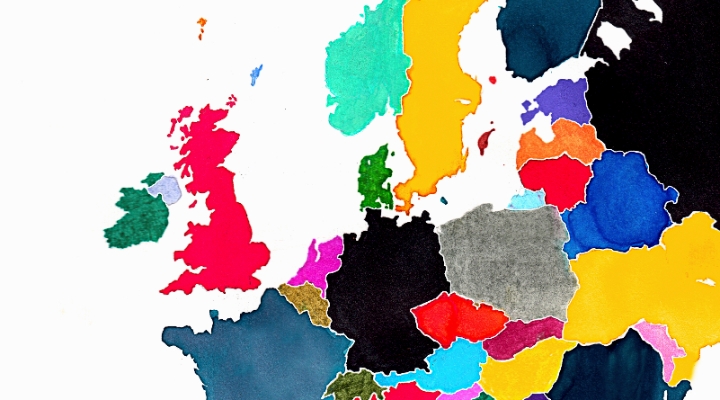From time to time, Morningstar publishes investment commentary and insight from asset managers, educational institutions, and registered investment advisers under as part of our third-party "Perspectives" feature. If you are interested in Morningstar featuring your content, please contact Online Editor Holly Cook at holly.cook@morningstar.com. Here, Philip Poole, Global Head of Macro and Investment Strategy at HSBC Global Asset Management says that despite double dip concern, activity remains encouragingly robust in much of the world.
Too Much Gloom and Doom--Liquidity Means that Emerging Markets Could Rally in Q4
With the fleeting summer in the western hemisphere drawing to a close, financial markets are getting back to business with traders and fund managers eyeing annual performance targets. So will we see renewed risk appetite and a market rally before year end?
The risk of a ‘double dip’ recession remains the major worry for investors, and views still seem to be polarised on whether this will be avoided or is simply inevitable. When investors fret about double dip risks, US concerns are often automatically translated into global concerns. But this ignores the fact that in large parts of the rest of the world activity remains encouragingly robust.
Let’s start with the emerging world. News is generally supportive of on-going recovery that is positive for risk assets, particularly news from China and India. Investors continue to fear that China’s slowdown becomes a meltdown. As highlighted before, that is not the HSBC view and yesterday’s HSBC China manufacturing PMI supports this interpretation with the index returning to expansion territory.
We continue to believe that domestic demand in China will be resilient and will help to deliver credible GDP growth close to 9% in the second half and through into 2011. Then there is India. The economy grew at its fastest pace in more than two years (8.8% year on year) in the second quarter. The economy is showing few signs of cooling despite policy tightening and the HSBC India manufacturing PMI showed sustained expansion in manufacturing for the 17th successive month. In fact, rather than evidence of a slowdown, inflation pressure and deterioration in the trade balance suggest the authorities will need to continue to tighten to prevent overheating.
Turning to the developed world, with the exception of Japan where data continues to disappoint, there are also encouraging signs of life. Australia’s second quarter GDP release on Wednesday is a case in point. The economy expanded by 1.2% (seasonally adjusted) up from 0.5% and beating expectations. In annual terms, growth was up at 3.3%, the fastest pace in nearly two years with consumer spending surprising on the upside and residential building activity robust. Europe, considered a basket case only a few months ago, has also been showing encouraging signs--EU growth accelerated sharply in the second quarter with German GDP, in particular, very strong. Unemployment is showing signs of stabilising and leading indicators are also generally encouraging, including the European Union’s Eurozone economic sentiment indicator which is now back to a level of optimism not seen since before the crisis. In many respects Europe’s economic rebound, including much of emerging Europe, is in sharp contrast to the market’s perspective of a stalling recovery in the US and Japan.
The US: What the Data Is Still Not Telling Us
There is a flurry of US data this week which will culminate in the crescendo that is non-farms payrolls on Friday. Employment in the US fell by more than 4% during the recession and the unemployment rate more than doubled so employment data will continue to be crucial in shaping investors’ perceptions, but it is worth looking at some of the other recent data. The Conference Board’s confidence index rose 2.5 points to 53.5 in August from a revised 51 in July, ahead of market expectations. Confidence is a closely watched measure because it tends to track consumer spending, which is the dominant share of US GDP. While consumers are likely to remain in a cautious mood, they now appear to be becoming slightly less negative. Consumer spending rose by 0.4% in July, commerce department figures showed earlier this week, also ahead of expectations and despite all the gloom and doom about residential real estate, US home prices rose more than expected in June. Fears regarding the US financial sector may also be about to ease. The number of smaller problem lenders continues to rise and institutions are still being closed but at the sector level US banks’ profits rebounded to pre-crisis levels in the second quarter, as falling loan losses led to reduced provisions and higher income.
Value in Emerging Markets
In summary, on the balance of evidence we feel that concerns about aggressive deceleration of global activity--the key overhang for risk appetite--seem overdone. A double dip in the US still looks less likely than continued moderate growth. And we expect emerging economies to continue to outperform the developed world. There is also an important backstop. As the last FOMC meeting signalled and Ben Bernanke’s Jackson Hole speech made clear, the Fed is committed to maintaining the size of its balance sheet and stands ready to step in with additional extraordinary measures if things really do go pear-shaped. The Fed’s commitment as well as recent moves from the Bank of Japan reinforce our conclusion that global liquidity will remain flush and policy and market rates could stay very low for a long time to come. This should prove to be positive for key risk assets. Eventually, this liquidity should seek out yield and return in markets where fundamental anchors remain strong, particularly emerging economies.
With developed world debt delivering very low yields, we see significant relative value in emerging government debt and yields are likely to remain supported in both external and local debt markets. For external debt a rally should be expected to produce outperformance of higher yielding sovereigns and a general compression of spreads for the asset class. Markets could also become less aggressive on expected hikes in policy rates where inflation is not an immediate threat.
The environment should also be positive for carry currencies given the absence of yield on offer in the developed world which looks increasingly unlikely to change any time soon. Emerging markets currency carry trades could also be supported by currency appreciation as central banks in the emerging world loosen the reins to allow appreciation to counter rises in global food prices.
Having corrected from recent highs earlier in the year, on many standard valuation metrics, emerging markets equities also now offer medium-term value. In a BRIC context, Russia stands out. In sector terms, we favour gaining equity exposure to the emerging consumption theme which we see as a powerful secular story as global rebalancing proceeds.
Philip Poole is Global Head of Macro and Investment Strategy at HSBC Global Asset Management. This article was prepared for general information purposes only. The views and opinions expressed herein are those of HSBC Global Asset Management, based on data as of 1 September 2010. These views and opinions do not constitute investment advice and are subject to change at any time.











.jpg)










